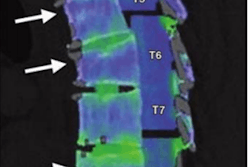The researchers from Stanford University developed a Markov model to estimate lifetime costs and life expectancy for 64-year-old patients at their institution whose routine imaging exams revealed incidental, indeterminate kidney lesions that were 4 cm or smaller.
Clinicians occasionally encounter incidental renal lesions in otherwise healthy individuals that warrant additional imaging workup. Determining the best imaging modality to examine these cases could help lower costs and reduce the risk of potential complications down the line, Drs. Domenico Mastrodicasa and Bhavik Patel told AuntMinnie.com.
Mastrodicasa, Patel, and colleagues used their Markov model to perform a Monte Carlo simulation comparing three different strategies for evaluating renal lesions involving MRI, multiphase single-energy CT, or single-phase dual-energy CT.
Their comparative analysis indicated that DECT was the most effective modality among the three for most clinical scenarios, with relatively more accurate characterization of the lesions and also a lower overall cost. The lower cost of using DECT was primarily a result of its higher specificity, compared with the other imaging modalities, which could help reduce the need for unnecessary follow-up imaging or treatment, the researchers found.
"Our results may improve decision-making regarding optimal imaging strategy for renal lesion workup," Mastrodicasa said. "Moreover, our findings could be used to refine current imaging recommendation guidelines and could improve the adoption of DECT."



















